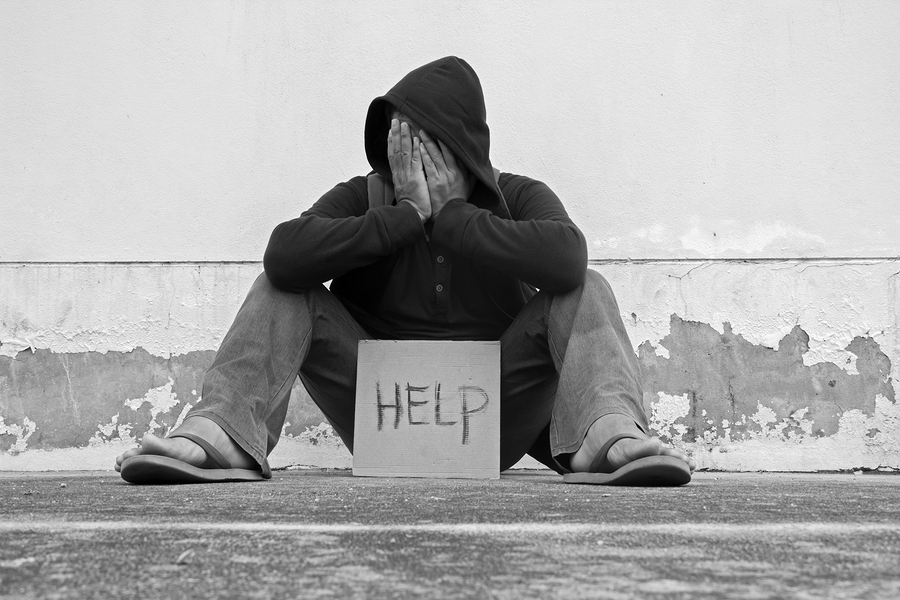Andrew Cairns talked about how banks and other financial institutions should look at partnering with not-for-profits to provide more comprehensive support.
We are considered the second richest country in the world, per capita, and we have enjoyed almost three decades of uninterrupted economic growth yet somehow one in six Australian children are living in poverty.
Thursday 17 October is the International Day for the Eradication of Poverty, and while Australia is far from pulling its weight in the effort to alleviate poverty internationally, we have some serious work to do here at home too.
There is no agreed national definition of poverty but a standard international approach is to draw the line at 50 per cent of median household income. By that definition there were more than 3 million Australians, including 739,000 children, below the poverty line last year – according to 2018 Poverty in Australia report by ACOSS and UNSW.
How is this possible in a rich country like Australia?
The first problem is distribution of wealth. Our prosperity has not been equally distributed amongst the population over recent decades, meaning that the richest have become richer while the poorest in our society have fallen further behind. This is even more pronounced for groups that experience disadvantage, such as Aboriginal and Torres Straight Islander communities and people with a disability or mental illness.
One major indicator is unemployment. While Australia’s national unemployment rates have not been alarmingly high, they are significantly higher in regional areas – particularly for young people. When coupled with an inadequate safety net like Newstart, unemployed Australians are often condemned to live under the poverty line. However, poverty isn’t solely about employment, with ACOSS estimating that 38 per cent of Australians in poverty are in work.
One of the biggest predictors of poverty is actually age, with rates much higher for those in retirement than any other group. In fact the demographic experiencing the highest rate of persistent poverty over more than 6 years is single elderly women – a clear representation of how our system of superannuation can leave women vulnerable in retirement.
The overall percentage of Australians over 65 who are living in poverty is significantly higher in Australia than the OECD average (19.5% to 11.4%). The Grattan Institute has argued that this figure would drop significantly if you consider home ownership as part of disposable income, but it would still leave Australia with a comparatively high rate of retiree poverty.
This also raises the question of housing costs, with home ownership decreasing and rent becoming increasingly unaffordable in some areas. Not only does this make life harder for people below the poverty line now, it could lead to even higher levels of poverty when younger generations who don’t own a home eventually reach retirement.
Considering all of these factors, the effort to eradicate poverty in Australia is an incredibly complex public policy challenge. It means ensuring that opportunity and prosperity are available to all, that there are adequate mental health and disability services and that people have access to affordable housing. It will require more jobs with a living wage, a better safety net for those without a job and that we don’t leave people vulnerable in retirement.
Governments at every level must play their part in meeting this challenge but they can’t do it alone. We need a collaborative approach from government, civil society and the private sector if we are going to make genuine progress. In Australia’s 2018 report on the implementation of the Sustainable Development Goals (SDGs), the Commonwealth Government highlighted the Thriving Communities Partnership for precisely that kind of collaboration.
The first UN Sustainable Development Goal (SDG) is to end poverty in all its forms everywhere. Here at Community Sector Banking we have integrated the SDGs into our business through company-wide initiatives so that we can contribute to an inclusive, sustainable and resilient future for all. Which is why we take great pride in our work on housing affordability and our capacity to offer indigenous scholarships and social investment grants that support Australia’s not-for-profit sector to meet this sort of challenge.
Yet, despite our economic growth and the best efforts of civil society, poverty levels in Australia have remained entrenched. So on October 17, I challenge every business and not for profit to reflect on what more we can do.
For example, banks and other financial institutions should look at partnering with not-for-profits to provide more comprehensive support to individuals who are entering financial distress, intervening before they slip into poverty. There needs to be more investment in social and affordable housing but with public-private collaboration we can also ensure that new housing is located near health and social support services, as well as public amenities. The private sector would be happy to invest more in social services if there are mechanisms that provide a decent return, so it is critical that civil society and government expand the scope of social investment bonds and entrepreneurship programs.
We all need to search for innovative solutions because I don’t think any of us want to keep living in a country where poverty is a reality for one in six kids.
About the Contributor:
Andrew Cairns is the CEO of Community Sector Banking, Australia’s banking specialists for not-for-profit organisations.
Andrew Cairns is the CEO of Community Sector Banking – the not-for-profit banking specialists supporting more than 20,000 organisations
- Andrew Cairnshttps://thirdsector.com.au/author/andrewcairns/
- Andrew Cairnshttps://thirdsector.com.au/author/andrewcairns/
- Andrew Cairnshttps://thirdsector.com.au/author/andrewcairns/
- Andrew Cairnshttps://thirdsector.com.au/author/andrewcairns/











